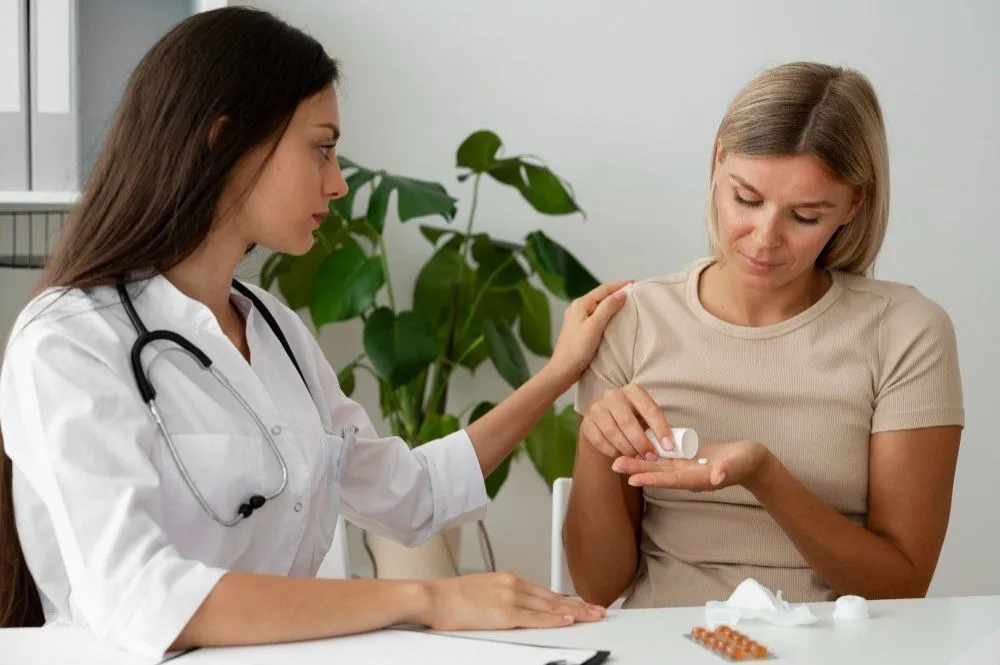Acne is a skin condition in which hair follicles in the skin become clogged with oil and dead skin cells. All cases of acne develop due to changes in hormone levels in the body that cause excess oil production in skin glands of face, neck, chest, shoulders and back. It is most commonly seen in adolescent boys and girls who are experiencing hormonal surges of testosterone and oestrogen. However, skin blemishes that continue or erupt long after the teen years could suggest certain diseases and conditions.
In women, the most common condition that results from hormonal imbalances in body is the polycystic ovarian syndrome (PCOD). Acne is among the most noticeable signs of PCOD, in addition to irregular ovulation and menstruation cycles, thinning hair, and weight gain.
How & why does acne occur?
Acne results from oil, bacteria and dead skin cells that get trapped in the pores of the skin. Women dealing with PCOD have elevated levels of androgens or the male sex hormones like testosterone. A metabolite of testosterone, dihydrotestosterone, increases oil production, which plugs the pores of the skin. Bacteria along with skin cells get trapped in these clogged pores, resulting in inflammation or pimples or blemishes.
What one needs to know about symptoms or signs?
PCOD-related acne occurs in areas that are hormone-sensitive, like the lower portion of face that includes chin, cheeks, jawline and upper neck. Acne that results from PCOD disorder is different from acne that occurs during puberty as it involves tender knots under the skin rather than surface bumps, and there may be lesions that erupt around the time of the menstrual period. Acne due to elevated levels of male hormones can be accompanied by increased facial hair growth, deepening of voice and decreased breast size.
Which specialist should be consulted in case of signs and symptoms?
Women who observe irregularities in their menstrual cycle and acne that flares up in around the hormone-sensitive areas should consult a dermatologist for further investigation.
What are the screening tests and investigations done to confirm or rule out the disorder?
Tests may be conducted to confirm if the presentation of acne is due to PCOD or other hormonal changes. These include:
- Blood tests - To measure testosterone and luteinizing hormone (LH) levels, which are high in women with PCOD.
- Ultrasound scan - An ultrasound of the ovaries can detect any physical symptoms of PCOS like enlarged ovaries or cysts in ovaries.
What treatment modalities are available for management of the disorder?
Topical acne treatments such as creams and gels do not generally treat PCOS-related acne. Hormone therapy is most effective in dealing with PCOD-related acne. Options include:
- Birth control pills - The doctor prescribes an oral contraceptive pill that contains both oestrogen and progesterone to provide relief from acne by reducing the levels of male hormones in the body. This treatment is given to women as part of general treatment for PCOD too.
- Spironolactone - Typically a blood pressure medication, spironolactone has proven effective in reducing acne by itself or in combination with oral contraceptives. Its primary function involves blocking aldosterone hormones (which raise blood pressure) from binding to their receptors, but due to the chemical similarity of aldosterone and testosterone, this drug can block testosterone too, relieving acne symptoms.
- Lifestyle changes - Eating a healthy balanced diet and exercising regularly can help check the underlying hormonal imbalances in the body and control symptoms of acne.
Best Gynaecologists in Delhi NCR, Kolkata, Mumbai Region, Hyderabad, Chennai

Reviewed by







